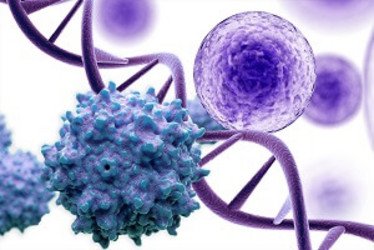A New Focus for Cancer Therapeutics
As oncolytic virotherapy comes into industry focus, a range of challenges including variable target virus selection, clinical patient access, and manufacturability require industry progress. Here, I share insights and crucial considerations to successful marketization.
Joe Sinclair |

There were 17 million new cancer cases and 9.5 million cancer deaths worldwide in 2018 according to estimates from the International Agency for Research on Cancer (IARC). The global burden is expected to grow to 27.5 million new cancer cases and 16.3 million cancer deaths within the next two decades in correlation with the growth and aging of the population (1). The total cost of treatments in the US alone now sits at $150 billion per year (2).
Historical first-line cancer treatment options have included surgery, chemotherapy, radiotherapy, and hormone therapy – which suffer from critical drawbacks including strong side effects, invasive procedures, and eventual waning efficacy and tumour resistance to treatment.
Recently, industry and patients are focusing on the therapeutic potential of treating cancer with immuno- and virotherapies, including immune checkpoint inhibitors, gene-mediated cell therapies, and therapeutic vaccines, among other approaches. Attention is rapidly converging on a particular modality, as oncolytic viruses (OVs) have shown strong potential to complement existing therapeutic options, either as a monotherapy or in combination with other immunotherapies, traditional treatment options, or even other OVs. OVs can be tailored to attack any cancer cell without targeting healthy tissue, while providing impressive efficacy (3, 4) and a strong safety profile with limited side effects (5). The further engineering and augmenting of OVs can amplify the activity and response to these treatments, including oncolysis, and the critical release of tumour antigens to stimulate an innate immune response from the body directed at the tumour.
With all of this in mind, it is no surprise that there is substantial energy in the market right now, with around 160 emerging biotechnology companies exploring this new modality and area of research. Thus far limited OV therapies have been commercially approved, with only one marketed approval by the US FDA (Amgen’s talimogene laherparepvec (T-VEC)) and one recent approval by Japan’s MHLW (Daiichi Sankyo’s teserpaturev (Delytact)). However, many more are in early-to-late clinical development.
There are, however, several limiting factors currently preventing OVs from achieving their full potential with broader clinical progress and additional market commercialization. To open the door for widespread commercialization and use of OVs, the following four challenges must be resolved:
- Virus variability and multiplicity: a single OV capable of targeting a broad range of cancers in most patients has yet to be found. Each cancer has a specific genetic profile, which means that presently no virus or vector has been shown to be universally effective. In addition, targeting the mass of tumour tissue is very different from targeting the totality of individual cancer cells.
- Heterogeneous immune responses: Some patients have immunity to certain virus platforms commonly used to create OVs. This can undermine the strength of the immune response elicited or even dampen the ability of the OV to achieve oncolysis (6,7).
- Access to trial participants: Sourcing patient numbers sufficient for studies to ensure adequate representation of all possible patients for a particular OV candidate is a major challenge, especially as patient access is generally limited to those who are refractory or relapsed from first line and traditional treatment options.
- Adequate manufacturing capability: Very few companies have capacity or specialist equipment tailored to the broad requirements of this field. Requirements include cleanroom grades, technologies supporting avian production systems (specific pathogen-free eggs, chicken embryo fibroblasts), continuous cell substrates, and applicable adherent and suspension production platforms. In short, the still advancing industry suffers from limited options of viable early and late-phase partners, incurring supply challenges during development and manufacturing production.
But the recent approvals have shown that there is a viable pathway to commercialization. To help maximize the chances of successful marketization, I can offer four key points to keep in mind.
First, plan your development roadmap before embarking on the project. Rigorous development is critical in linking product and process, and the processes required for OVs differ greatly from the needs of other therapies. Planning a given project’s development process and downstream milestone targets from the outset can help ensure that you have the necessary time and resources to devise your strategy, and support discovery, development, manufacture, and testing requirements that align to a timely regulatory filing. Proper planning in advance can minimize risks along the way.
Second, choose the right virus candidate for your needs. Each virus platform will have different strengths and weaknesses when it comes to its ability to be genetically modified, the cells it preferentially infects, and how it reproduces once it has infected the target cell. Bearing this in mind, it is crucial to select the candidate with the optimal profile for the cancer you intend to target. Failure to fully consider the unique features of your virus candidate at the beginning of the project could lead to issues further down the line.
Third, you need access to appropriate cell lines. A range of cell lines have already been evaluated for OV development. Nevertheless, for each cell line, you must consider all compatibility requirements. These depend on the type of OV being developed, susceptibility to infection of the host cell line, viral propagation, and overall productivity of the production system, as well as whether the cell line is adherent, a suspension, or suspension adapted. It is also wise to consider upfront the licensure requirements/agreements for the free-and-clear use of cell lines in a commercial setting, especially when translating processes from academic research.
Finally, you must develop an appropriate testing program. Live viruses are highly complex. This complexity is reflected in the need for robust analytical assays to characterize and release the OV. Experienced analytical specialists can help ensure GMP release of raw materials, virus and cell banks, as well as drug substance and product for appropriate identity, purity, potency, titer, residuals, and safety requirements. Bioanalytical assays and post-treatment patient monitoring should also be incorporated into any OV analytical program, where applicable.
Complex, challenging, yet rewarding research in the OV field is well underway, and a rapidly increasing number of exciting discoveries remain in progress through preclinical and clinical trials. The specialist expertise and dedicated equipment required can be difficult for OV developers to acquire, implement, and operate in-house, particularly as an business with limited capital.
However, by remaining aware of the considerations outlined above – and by seeking the support of expert CDMOs and virotherapy partners where necessary – it is possible to maximize the likelihood of a commercially and economically viable product. OVs are transformational therapies, and soon – with focus and determination – they will have their chance to change patients’ lives.
Leverage Proven Technology to Speed Path to FIH

GPEx® Lightning is a fast, flexible way to shorten the path to production of phase 1 material. During this talk, we share the latest data leveraging GPEx® Lightning to generate highly stable, highly productive cell pools.
- M Roser et al., “Cancer,” Our World in Data (2021). Available at: https://bit.ly/mort-no.
- S McGrail, “Cost of Cancer Care Reaches Nearly $150B Nationally,” Healthpayer Intelligence (2021). Available at: https://bit.ly/30F32mc
- ZS Guo, Z Liu, DL Bartlett, Front Oncol., 74, (2014). DOI: 10.3389/fonc.2014.00074
- A Muik et al., Cancer Res., 74, 3567-3578 (2014). DOI: 10.1158/0008-5472.CAN-13-3306
- LQ Fu et al., Virus Res., 270 (2019). DOI: 10.1016/j.virusres.2019.197675
- J Duell er al., Leukemia, 31, 2181-2190 (2017). DOI: 10.1038/leu.2017.41
- G Marelli et al., Front Immunol, 26 (2018). DOI: 10.3389/fimmu.2018.00866
Joe Sinclair, Vice President, Business Development and Corporate Strategy, Vibalogics



















